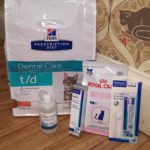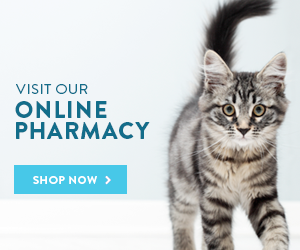MEET CHARLIE – the hypothyroid cat
Have you ever heard of hypothyroidism? Neither had Charlie until he met Dr. Kelley.
Charlie met Dr. Kelley when he was presented for constipation. His little belly was round, distended and firm. He could not poop even though he was trying his hardest. Charlie was also very small for his age. His brothers and sisters were twice his size and had gone on to their forever homes. Charlie was small and underdeveloped. His bones had not grown. His growth plates were stunted, even his teeth were not maturing! After reviewing his case, Dr. Kelley decided to perform a simple blood test that confirmed that Charlie had an underactive thyroid gland.Hi
Unlike hyperthyroidism which is a relatively common acquired disease of older cats, primary hypothyroidism is congenital (meaning the cat is born with it) and rare. The thyroid gland does not form correctly. The thyroid gland produces a hormone that is responsible for metabolism and when it is either over active or under active can wreak havoc on the entire body system. Cats with hypothyroidism have trouble growing their bones and nervous system. They are usually dwarfed, cold intolerant, lethargic, mentally dull, constipated and have a thin coat. Domestic short hair cats and Abyssinians are more likely to be born with primary hypothyroidism than other types of cats. Secondary hypothyroidism can occur in adult cats, most likely as a result of over treatment of hyperthyroidism. Although very rarely, an adult cat can suffer from a case of spontaneous hypothyroidism which means there is no obvious cause.
Charlie is now feeling better and taking his thyroid hormone supplement twice daily. He is getting bigger very slowly and his constipation is gone. Charlie is playing and romping around just like any kitten.
Because there are so few reported cases, it is hard to know what Charlie’s future will hold. Published reports speak of decreased life spans for hypothyroid kittens. However, Dr. Kelley just said good bye to one of her favorite patients that also suffered from hypothyroidism and she was 16 years old!
Now, Charlie has officially found his forever home with Dr. Kelley, her cat Lola “the Beast” Kelley and small dog Luna. Although congenital hypothyroidism is rare, it may be underreported because it goes unrecognized. Charlie hopes that he can help raise awareness to help more “runts” or “poor doers” that may be hypothyroid like him!





